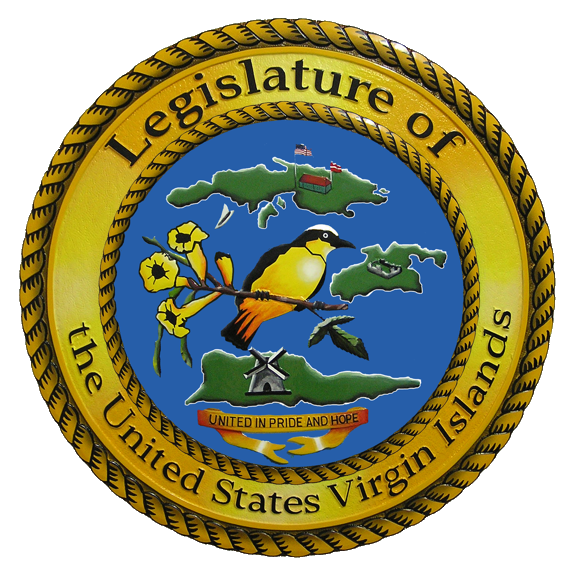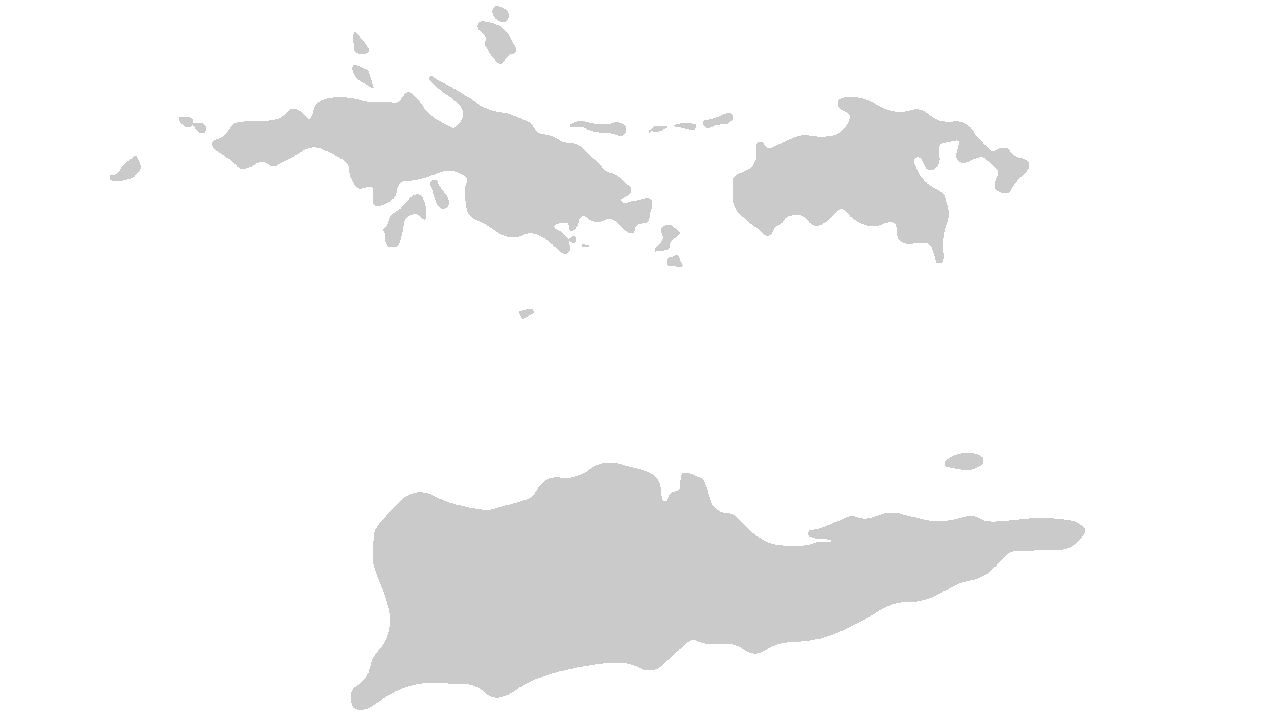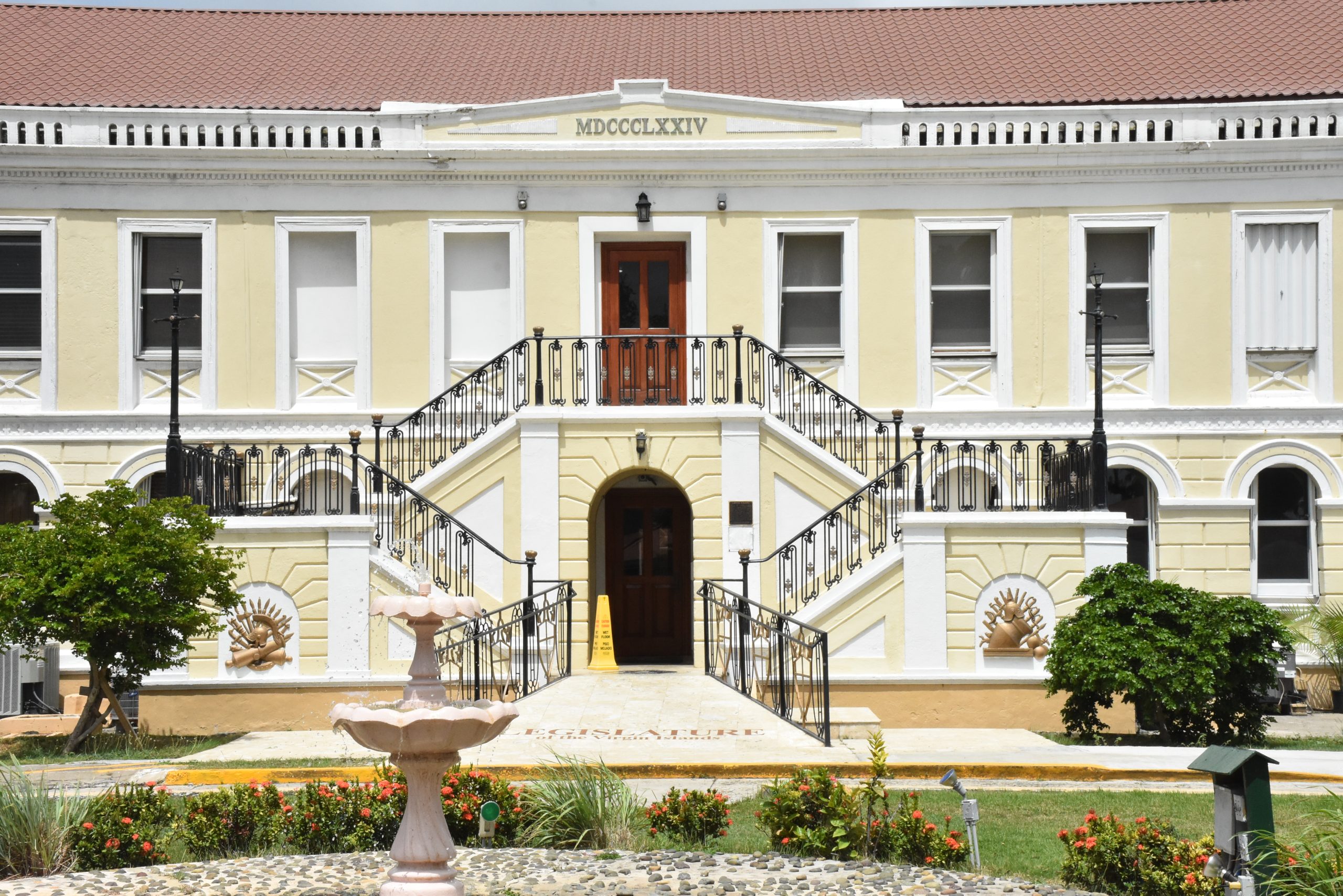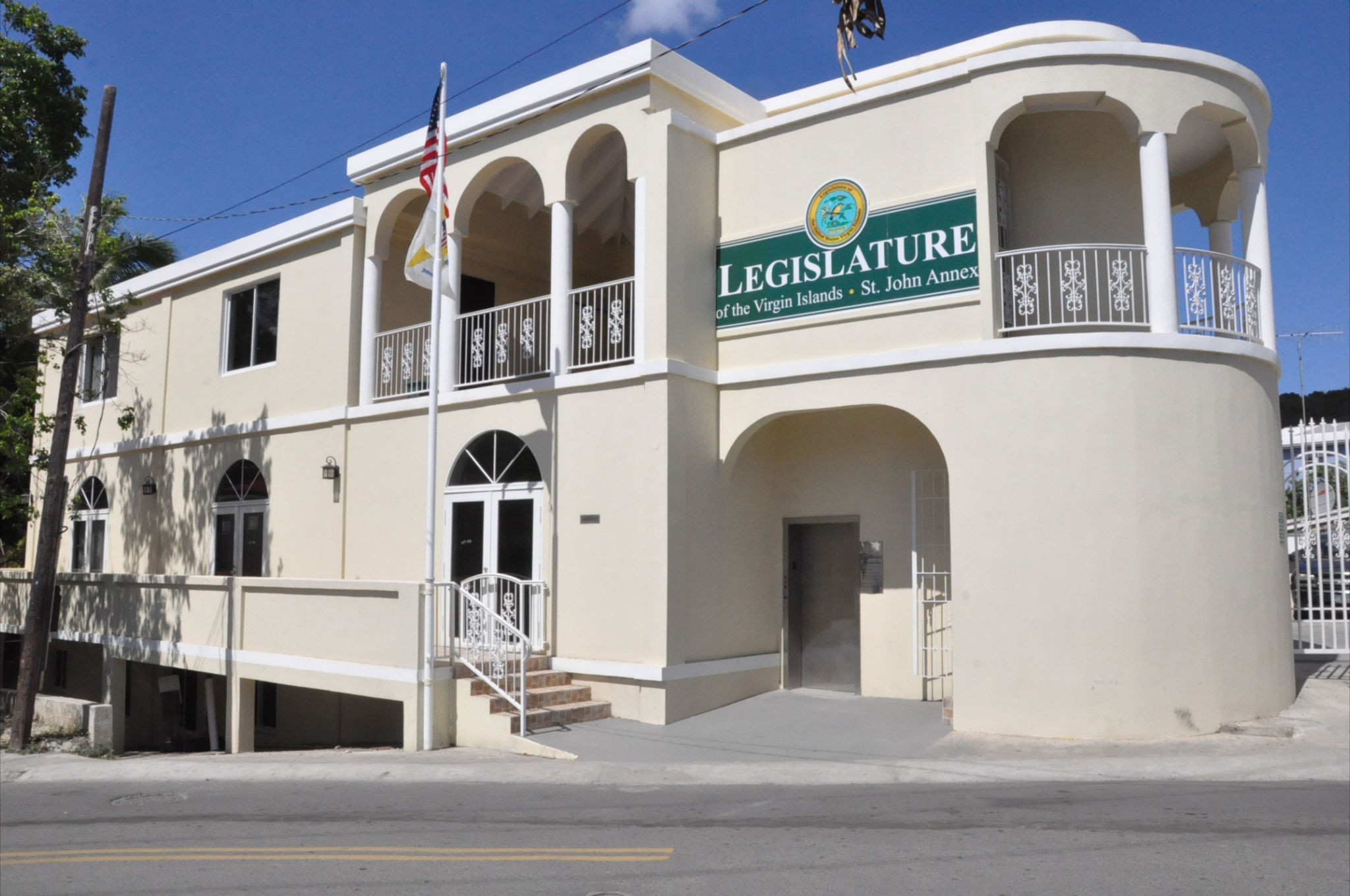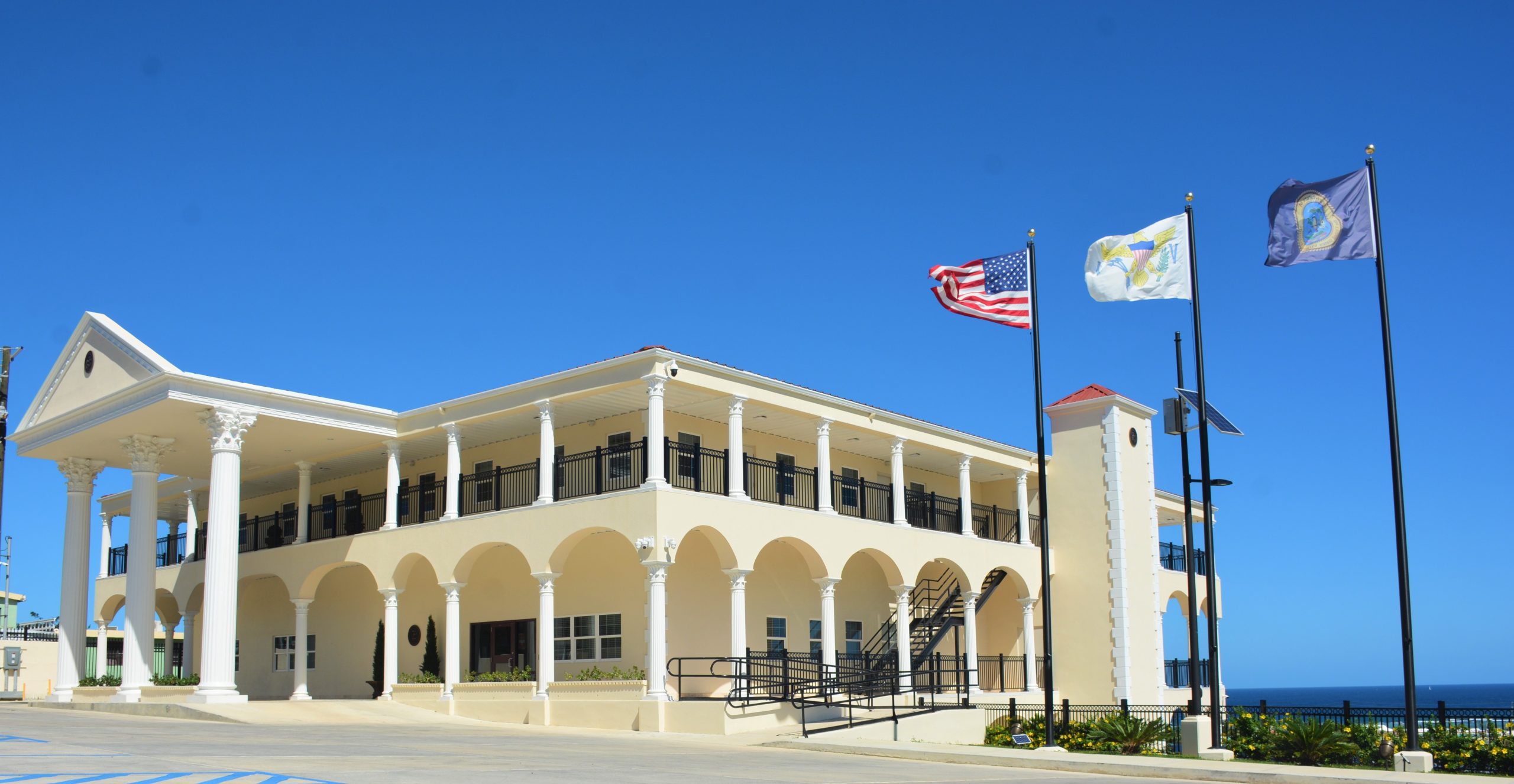History
Historical Evolution of the Legislature
of
the United States Virgin Islands
The Colonial Law of 1863 changed the system of government by dividing the islands into two Municipalities which were St. Thomas – St. John, and St. Croix. Each Municipality was served by a Colonial Council, both of which could combine as an Assembly on the call of the governor or both Councils. The Councils had slightly greater powers than their predecessors and they had some measure of financial control that is usually inherent in legislative bodies as we know them. However, many limitations on the powers remained firmly in the hands of the King and his direct representative, the governor. All final decisions rested with the King. In addition, the King appointed four members to the St. Thomas – St. John Council and five to the St. Croix Council. An additional handicap was the amount of deliberation necessary to adopt any measure. Before the Council adopted any measure, it was subject to revision three times. The first revision period permitted general discussion, in the second the governor or the council could make amendments, and in the third, only the governor could make amendments. As aforementioned, any measure was still subject to the approval of the King in order to become law.
The Colonial Law of 1863, besides dictating the structure of government, also dealt with the important matter of enfranchisement. It was the opinion of the lawmakers at the time that landowners and other people of means were those that truly had a stake in the society and therefore should be the ones represented at the polls. As a result, the strict property and income qualifications stipulated by the Colonial Law of 1863 were such that only 5.5 percent of the population was able to vote. This caused a double disadvantage for the average citizen who saw not only a Colonial Council that was practically powerless, but one in which he was unrepresented. To put it simply, the average or “grass roots” people had no voice whatsoever in the running of the government.
The Colonial Law of 1906 was basically an amendment to the Colonial Law of 1863. Of its provisions, the most noteworthy is one which states that before any ordinance is adopted, the opinion of the Assembly must be solicited. While this further ensured that the voice of the Councils would be heard, it still gave them no power to enact or influence any legislation. This law of 1906 was the last “constitutional” document handed down by the Danes and it reflected the fact that to the very end, the Danish government felt that although the natives should be free to express their opinion, the decision making functions must rest with the government of the “mother country.” To the end of Danish rule, Virgin Islanders had little self-government.
The lack of self-government, along with dire economic straits for the islands led to the widespread native approval of the sale of the islands in 1916 and their subsequent transfer in 1917. The natives assumed that along with the rights of American citizenship, they would also receive a greater measure of self-government. As things turned out, they got neither.
When the United States took over the islands, it was a hasty and forced move for which the sole purpose was to prevent the Germans from taking them and thus to improve strategic defense of the Panama Canal. Therefore, the islands, unlike the Louisiana Purchase or many other territories, were not acquired for purposes of expansion, but simply as a military possession. As a result, the natives were not granted citizenship and the administration of the islands was delegated to the Department of the Navy. The Navy, never known for being socio-politically gifted, decided to leave what seemed to be well enough alone and thus, with the obvious exception of having a Naval officer take the post of governor, there was no significant change in the structure of government.
Under the Administration of the Navy, significant progress was made in the more material aspects of life. New roads and hospitals were built, and efforts were made to improve sanitation and education in the islands. However, the years of the “Naval Regime” from 1917-1931 were long, bitter years for those who sought greater self-rule in the Virgin Islands. The training and temperament of the average ranking Naval officer was not at all suited to the running of a popular government for a peaceful group of people. Therefore, according to the natives, the majority of Naval governors conducted island affairs in much the same manner as they would have run a battleship. To make matters worse, the Federal Administration largely lost interest in the islands after World War I as they had served their original purpose. As a result, there was little or no effort on the part of the administration to oversee the affairs of the islands and the
governor was thus left quite free from outside interference. This combination of federal neglect, carried over Danish laws, and Naval temperament conspired to effectively stymie any efforts at self-government.
The years of the “Naval Regime” bred many seeds of discontent and produced such “radical” political activists as Rothschild Francis and D. Hamilton Jackson, as well as others who fought for greater civil liberties and the removal of the Naval administration. In 1927, United States citizenship was granted to Virgin Islanders. Finally, in 1931, with the help of the American Civil Liberties Union (ACLU), the native leaders had stirred up enough publicity and outrage that President Herbert Hoover signed an Executive Order. The order provided for the transfer of the administration of the islands from the Navy Department to the Department of the Interior. While the yoke of the Navy had been lifted, no structural changes were made in the government and active leaders continued to press for change.
On June 22, 1936 the United States Congress passed the Organic Act of 1936. Under the provisions of this Act, a true system of civil government was set forth for the Islands. The two Colonial Councils, now Municipal Councils with the exclusion of the appointed members remained and could still combine to form a Legislative Assembly. They were given legislative powers to pass laws and to override the governor’s veto by two-thirds vote, although in this event, final veto power went to the President of the United States. The Legislative Assembly, which could convene upon passage of resolutions by both Councils or on the call of the governor, had the authority to enact legislation for the entire Virgin Islands. To be eligible for membership in a Municipal Council, a candidate had to be at least twenty-five years of age, a qualified voter in the municipality in which he sought election, and be a resident of that municipality for not less than three years preceding the date of election.
The Organic Act of 1936 was a major sign of victory for native Virgin Islanders who wanted a greater measure of self-government. Of this act, the greatest features include the granting of universal suffrage and permanent removal of property and income qualifications for voting. This took political control of the islands from the upper class and “landed gentry” and placed it squarely in the hands of the thousands of working and lower class citizens in the Virgin Islands. Thus, the face of the legislative branch was also changed. Conservative legislators preferring the status quo were replaced by more liberal, sometimes even radical ones who were more dedicated to bringing about social and economic changes, better working conditions, etc., for the working man or the “grass root.”
Despite the apparent victories, however, there were still items left to be desired in the new governmental system. Although Councils were empowered to enact legislation and override the governor’s veto, the Congress of the United States still reserved the power to annul any and all legislation enacted by the Virgin Islands government. The President of the United States retained final veto power in the case of a legislative override of the governor’s veto. In addition, the Legislative Assembly, the body that passed laws for the entire territory,
was the representative of unified government. It did not meet with the frequency that would have been desirable and was only empowered to act on bills proposed by the governor or by both the separate Councils. In other words, the Legislative Assembly was not capable of independent action. It can be said, therefore, that there was still no viable working instrument to enact legislation for the entire Virgin Islands and that a unified system of government was still woefully lacking. By this point, it was more than high time that one was placed into effect.
In 1954, this unified legislative system was put into effect when the United States Congress passed the Revised Organic Act of 1954. Among other things, this act created a unicameral body called the Legislature of the Virgin Islands in which all legislative power was vested. For the first time since 1863, the government of the Virgin Islands was fused into one entity. A relatively equal balance of power between the executive and legislative branches was finally attained. In addition, equal representation from St. Thomas and St. Croix was achieved.
The unicameral Legislature, created by the aforementioned act, consisted of eleven members: three from the District of St. Croix; three from the District of St. Thomas; one from the District of St. John; and four At-Large, serving all three islands.
The At-Large concept is utilized solely for the purpose of embodying the unified interest and to reduce inter-island deadlocks.
In 1966, the Legislature under-went further change when the United States Congress and the Virgin Islands Legislature passed a resolution. The number of seats was increased from 11 to 15 and the distribution changed to the following: seven from the District of St. Thomas – St. John; seven from the District of St. Croix; and one At-Large who must be a resident of St. John. With that move, the Legislature of the Virgin Islands had finally evolved into its present form. It is now a body with the rights and powers enjoyed by most state legislatures of the Union. With the century-long development of the legislative branch from Colonial Assembly to Virgin Islands Legislature, we see an important part of a people’s struggle for self-government.
